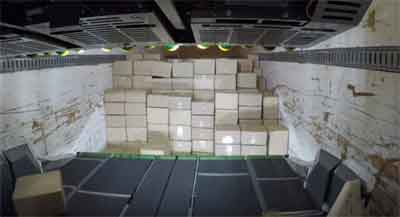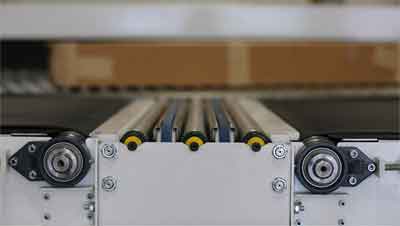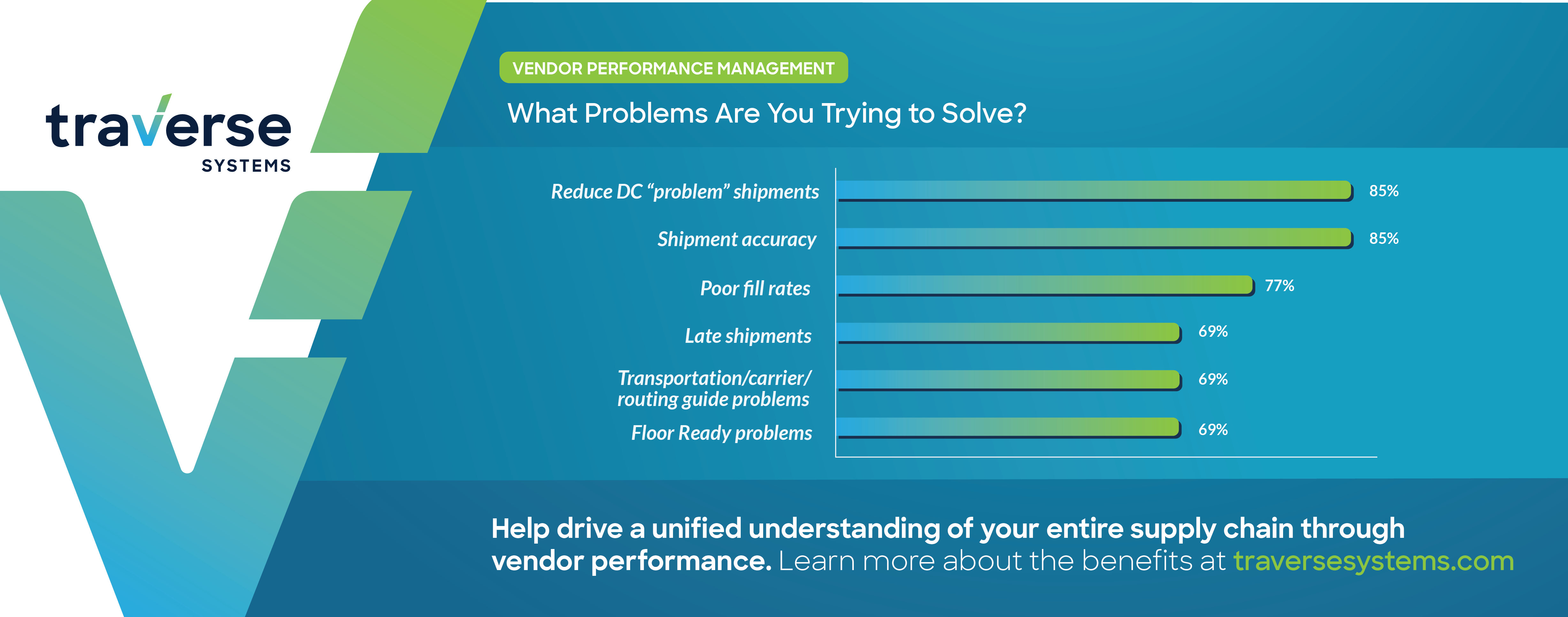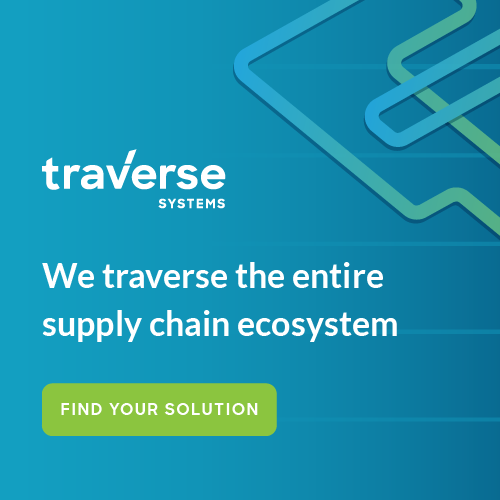Trip Report: ProMat 2019 in Chicago
It's now been a week since I returned from ProMat 2019, the giant materials handling and systems show put on by the industry group MHI every other year, with the newer MODEX show held on the alternating years in Atlanta.
Whether its ProMat or MODEX, I always look to identify the largest theme from each show, and as I wrote last week, for me this year it was the mainstreaming of a wide variety of mobile robots in distribution. (See ProMat 2019 -The New Era of Mobile Robots in Distribution.)
Rapidly improving technology, a growing number of mobile robot providers, ecommerce fulfillment pressures and the on-going DC labor crisis in my view have combined to create an inflection point in the market here in 2019. Mobile robots will not soon be viewed as a niche technology in distribution but rather a key tool in the arsenal to semi-automate picking and replenishment tasks.
| GILMORE SAYS: |
The enclosed robot moves along shelving, stops at the needed SKU, and then combines side grabbers with a plate that moves underneath the box to pick it.
WHAT DO YOU SAY?
Send us your
Feedback here
|
With that backdrop, I saw a number of interesting other technologies at ProMat, but three stood out.
The first of those is a new robotic trailer unloaded from Intelligrated, now part of Honeywell. This is a very different, a frankly ginormous machine designed to automatically unload floor loaded cartons.
As you can hopefully see in the image below, the unloader features a series of vacuum-type tools in an array at the top of the top of the machine, supported by a vision system. At the bottom is another tool with powered belts, at the front of which is a band of powered rollers that drive cartons on to the belts.
So working in combination, the vacuums and the leading rollers work to get stacked cartons onto the belts, which then singulate those cartons on to a takeaway conveyor. The section cups fully grab some of the cartons and place them on the belts, while others fall off, but it doesn't really matter. Eventually, they all wind up on the belts, as the front rollers scoop them up.
Intelligrated Robotic Trailer Unloader

This approach is significantly faster than hand unloading. What's more, with that increase in speed companies might decide to go with floor stacking instead of palletization to increase trailer loading density.
I am not sure what the unloader costs, and this would not be for the faint of heart, but it was very interesting indeed.
Next, non-conveyables in an ecommerce world are increasingly an issue, by definition requiring manual transport. What am I talking about? Say a 6-foot ladder, or large window blind in a box, both of which might be conveyable on a straight run, but cannot be "sorted" or transferred to get to the end destination.
After several years of R&D, a company called Intralogistics has come up with a nifty way to deal with these non-conveyables (also called non-compatibles). It involves use of a new type of transfer mechanism it calls the GENI Flex sorter (see picture below).
Geni Flex Sorter for Non-Conveyables from Intralogistics

As the item approaches, it passes by a scanner to measure its length. Based on that data, the sorter pops up and works in smart combination with some powered roller and then belt conveyor that are parallel to the first conveyor. By changing the speeds of these other conveyors, the long item transfers over in a nearly perpendicular direction to start, but then the system rather magically straightens the item out.
Sortation complete.
The company says the system can handle products up to eight-feet long and weighing up to 150 pounds. It was actually first unveiled I believe a couple of years ago, but it is just now being commercially available. Intralogistics says the system is in use at a major parcel carrier. It is very cool and provides a solution to a long-standing challenge.
My third top solution comes from Bastian, a company for years positioned as an integrator of systems made by others. But now under Toyota Industries, which acquired the company in 2017, is doing its own R&D - and at the show unveiled a very interesting take on the popular shuttle system.
Shuttle systems operating in storage grids that typically hold totes. Small shuttles traverse up and down the grid, fetching totes with SKUs needed for order and delivering them to a station, where in general today there is a human that picks products from the totes and puts them into shipping cartons.
Thus, shuttle systems are a form, perhaps the most prominent one, of the "goods to picker" concept, with the goal of reducing expensive human picker travel time.
Increasingly, vendors are now taking that further, by using a robot arm to do the picking from the delivered tote.
Bastian has it appears improved on this design. First, it has been designed with a lot more storage density. Most existing shuttle systems, by comparison - including one being marketed right next store by a sister Toyota technology company - have a lot more "air" in the storage. The more dense design must be a function of the shuttle technology, but the result is a system that not only stores more totes in a given space, but also reduces on average shuttle delivery times.
In addition, Bastian has also develop technology in which the shuttle itself has a robotic arm so that the picking is done right within the grid, so that the tote does not have to be moved to some type of picking station outside the grid.
This is rather remarkable, actually, and means a tote could be discharged from the grid with the order fully picked, and delivered via conveyor to packing stations. To do this, Bastian had to develop its own shorter robotic arm, as existing arms in the market were too long to operate inside the grid.
This is very cool - and in my opinion a view of the future.
Some other ProMat 2019 highlights:
Knaap, always innovative, showed a virtually reality system in which you use a VR headset to explore a highly automated DC. The purpose? First, to simulate the system and its operation before finalizing the design. Second, potentially to train operators.
It was cool, but I am not sure about this. The VR in my opinion is not easy to navigate, and I had a bit of a hard time "picking" products with my virtual hand. Knapp also said for a complex system it might take a year to develop. But to get to a better VR system you have to start somewhere, and Knapp is well ahead of the pack.
Robot firm Boston Dynamics was there, but its intriguing "Cheetah" robot for logistics was available only as a video. We covered this a few weeks back, involving a truly new age robot for palletizing and depalletizing cartons. It moves very fast and has special new technology to gently nestle boxes on a pallet together like a human can do.
The obstacle: the company says it still has some work to do on safety aspects of Cheetah - but it's coming.
RightHand Robotics, with its interesting piece picking system we've covered in the past, combines a vision system and AI with unique "grabbers" they never want us to film, was at the show with an enhancement that allows for the first time for bar code reading of picked items. In great summary, an array of imagers around the robot provide a 360-degree field for picking up an item bar code as the robot arm grabs it out of a tote and into a shipping carton. Seemed to work well.
A company called Magazino had an interesting robot for picking cartons, primarily for picking shoe boxes now but more general purpose down the road. The enclosed robot moves along shelving, stops at the needed SKU, and then combines side grabbers with a plate that moves underneath the box to pick it.
Then interestingly, that box is stored in something like a Pez candy dispenser behind the picking apparatus. That means it could actually pick a box beneath another one by temporarily storing the top one. It can also stock items on the shelf in a similar way. It's not as fast as human - but it works for free once you buy one.
There is so much more, but I am out of space. Good event from MHI.
Any take on Gilmore's review of top new solutions at ProMat? What did you see that you liked? Let us know your thoughts at the Feedback button below.
|



![]()

![]()

![]()














